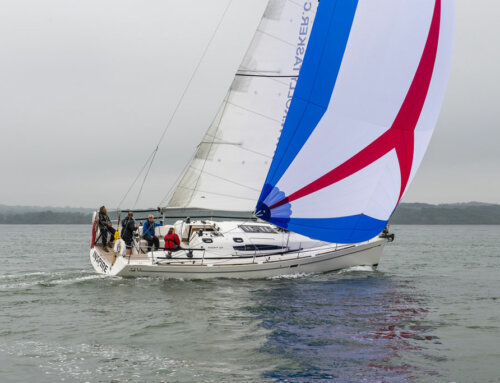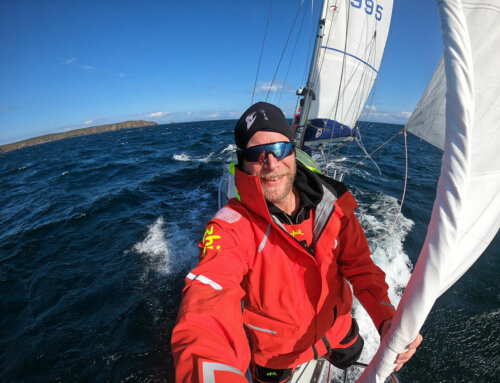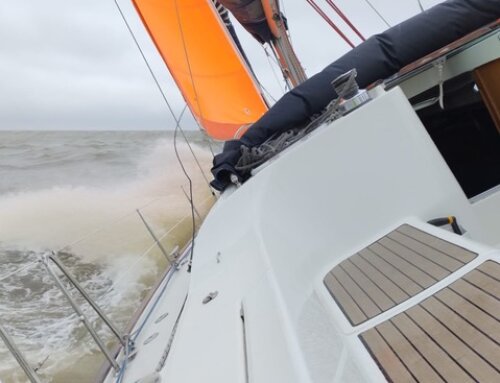We love to sail in the sun – our sails however don’t. Here’s how we at Rolly Tasker Sails protect your Ocean Sails from UV degradation and general wear and tear.
Ocean Cruising Sails
Ocean cruising, long distance sailing and blue water cruising: Catering for these types of sailing is one of Rolly Tasker Sails’ core competences. Many of our sails are tried and tested in constant and demanding offshore use over long periods at a time. This is where durability and reliability become crucial. And where our Offshore sails regularly perform and deliver. The famous solo sailor Jon Sanders relies on Rolly Tasker Sails for his round-the-world sailing adventures, as well as, from now on, the liveaboard voyagers Amy and Matt who have already sailed halfway around the world. And, of course, many more.
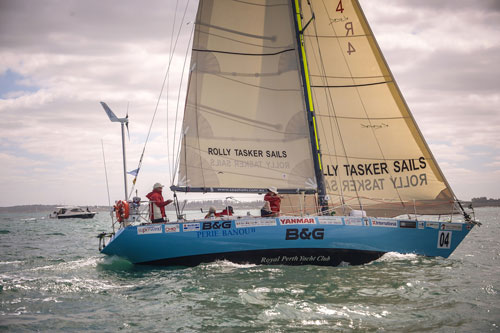
The perilous sun
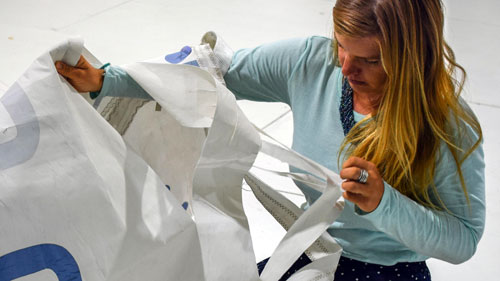
In the usual life of a sail, many factors influence its life expectancy. However, when sailing across the oceans, for long periods at a time and often in sunny or even tropical climates, one single factor becomes paramount: The sun. We all love the sun but we all also know of the destructive power of the UV rays. Continuous exposure to UV will, sooner or later, affect any surface – from human skin to sails. Sailcloth will become, over time, brittle and weak and will eventually rip and tear.
Choosing the right sailcloth
A specially woven sailcloth will greatly enhance UV resistance. For our offshore sails and blue water cruising sails, we use the Fastnet sailcloth made by Challenge Sailcloth, one of the world’s leading sailcloth suppliers. The Fastnet sailcloth is also used for charter boats and all sails for the “Clipper Round the World Race”, which are extremely demanding to the point of being brutal to the sails.
High density fibres
The Fastnet sailcloth is a high density fibre technology, resulting in a far more UV resistant surface than most other sailcloths. The secret lies in the way this sailcloth is woven. A super tenacity fibre in warp direction covers most of the surface area. In this way, the UV resistance is inherent in the sailcloth. Which is why this sailcloth does not need a UV coating, which does in time wear off – very similar to the sun-protective lotion that we put onto our skins. However, an extra coating on the sailcloth surface may also damage the structure of the cloth itself when it wears thin and breaks.
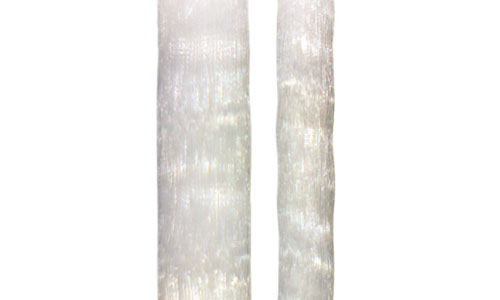
Value for money sails
At Rolly Tasker Sails, we use this superior sailcloth for all our offshore sails that are exposed to a lot of sun. Combining this UV resistant sailcloth with our offshore standard of quality sailmaking results in a tough, reliable and long-lasting sail which also is affordable. Our offshore specification for example specifies triple seams, extra-large radial stiffening patches in the corners, and a heavy-duty, hand-made finish. All roller-furling headsails additionally can be made even stronger by doubling the foot and the leech of the sail, which will add stability especially when part-furled. Doubling up the leech is also an option offered by Rolly Tasker Sails for extra strong offshore cruising mainsails.
Best possible choice
These are the reasons why extremely experienced ocean yachtsmen like Jon Sanders, who has been sailing around the world driven by Rolly Tasker Sails 10 times, rely on our sails. Out in the ocean, thousands of miles from the next harbour, there is no room for failure. As Jon said after leaving 71.000 miles in his wake on his epic triple world-trip: “During my triple nonstop circumnavigation, I had two mainsails on board. After one year, I changed them and when I finally came home, I could immediately have set out again as far as the sails were concerned. This is something that other sails must yet prove to be capable of!”
Extend the life of your sails
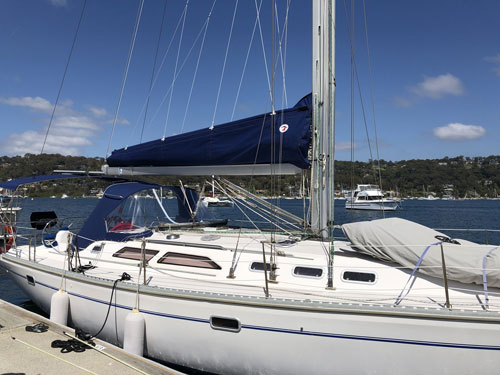
The best cure, as always, is precaution. In case of UV exposure, the solution is as obvious as simple: Whenever your boat is at rest, be it in harbour or at anchor, be sure to cover up the folded sails. The mainsail will usually have some kind of sail cover, such as boom cover or lazy bag. It pays to also use a sailcover that can be hoisted on the spinnaker or spare foresail halyard around the furled headsail. When leaving your yacht unattended for prolonged periods of time, or during off-season lay-ups, we recommend taking off the sails altogether and stowing them below decks.

